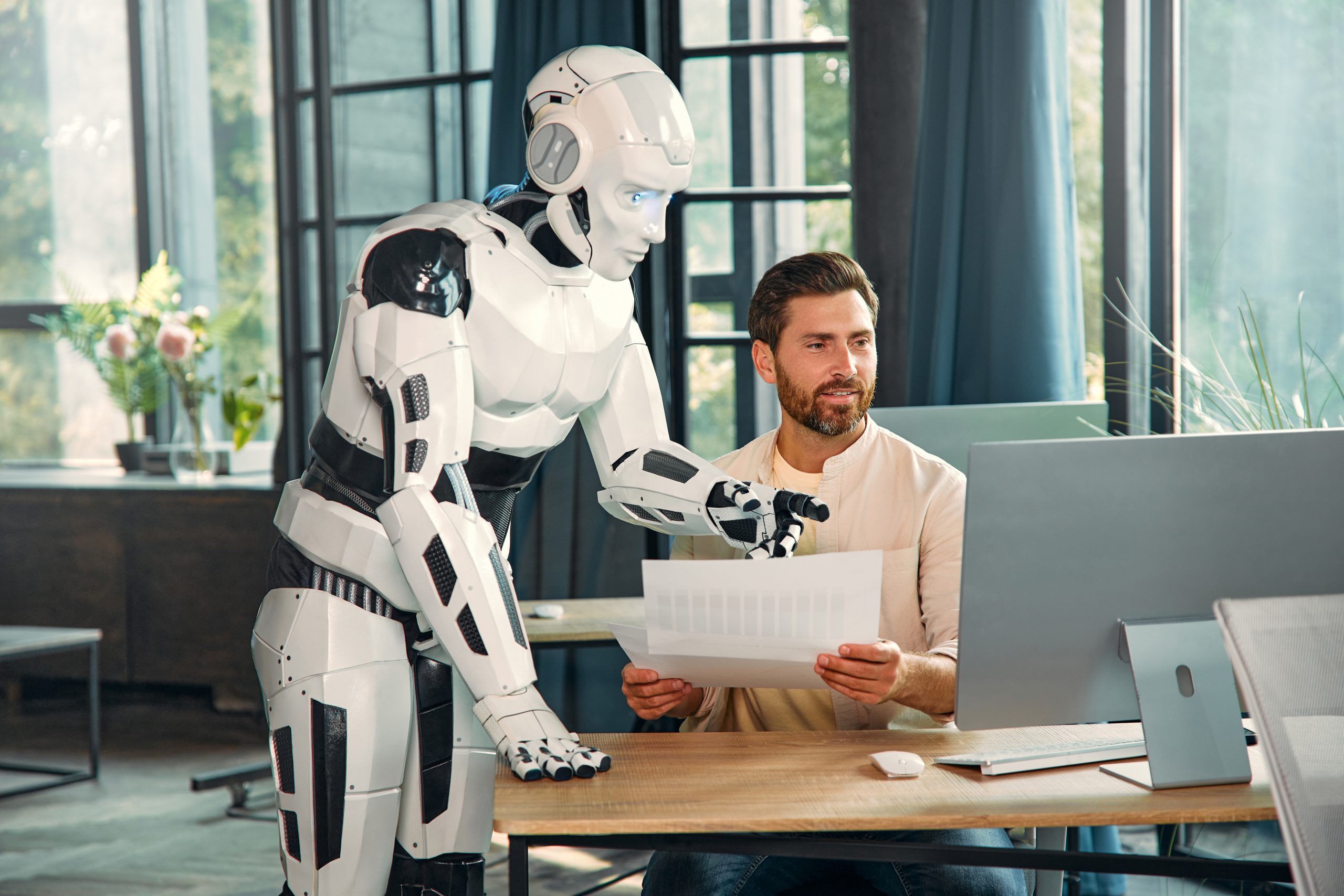
The business world is on the cusp of a major transformation. Simply relying on “more people” or “more technology” is no longer enough to boost efficiency, accelerate decisions, or foster innovation. The answer for today and the future lies in the synergy of human + machine.
This transformation is giving rise to a new organizational model: Cyborg organizations. These are adaptive, learning, and continuously evolving hybrid structures where humans and machines collaborate in decision-making, workflows, and strategic operations.
What Does “Cyborg” Mean?
The term “cyborg” stems from cybernetics, a field first defined by Norbert Wiener, which studies the control and communication mechanisms of systems. Today, this concept extends beyond human-machine interaction to describe organizations that can self-observe, optimize, and evolve dynamically.
Much like a living organism, a cyborg organization:
- Senses environmental data,
- Learns from mistakes,
- Adapts its decisions,
- Draws strength from both human intelligence and artificial intelligence.
How Do Human + Machine Teams Work?
This new work model moves beyond the fear of “will robots take our jobs?” The goal here is not competition but collaboration.
Role Distribution
Humans:
- Interpretation, empathy, strategic vision, ethical decision-making, creativity
- Social intelligence and contextual awareness
Machines (AI, automation, robots):
- Data analysis, speed, flawless execution of repetitive tasks
- Large-scale scenario generation and risk analysis
The result is neither purely human nor entirely technological—it’s a model driven by collective intelligence.
Real-World Examples
Cyborg organizations are no longer just theoretical. Here are a few examples:
- Healthcare: Radiologists work alongside AI to analyze imaging results, leading to more accurate diagnoses.
- Finance: Algorithms generate investment strategies, while portfolio managers oversee ethical and social impacts.
- Manufacturing: Human workers and robots collaborate on production lines, with robots handling physical tasks and humans focusing on quality control and creativity.
- HR and Recruitment: AI filters candidates, but humans make the final decisions, enabling data-driven yet human-centered choices.
Advantages of Cyborg Organizations
Adaptive Decision-Making
Flexible structures that respond instantly to changing conditions.
Data-Driven Leadership
Decisions are based on data and analysis, not intuition.
Continuous Learning
Systems evolve through machine learning combined with human feedback.
Sustainability and Efficiency
Resources like energy, time, and human effort are used more effectively.
Challenges and Considerations
This transformation comes with some uncertainties:
- How much authority should be given to AI?
- How can data privacy and security be ensured?
- How will humans adapt to this change?
- How should hybrid teams be managed?
Thus, alongside technological infrastructure, organizational culture, ethical principles, and change management are critical components of this process.
The Transformation of Leadership: From Command to Coordination
In cyborg organizations, a leader is not someone at the top of a command chain but an orchestrator of human-machine collaboration—an architect of harmony.
The new role of leaders includes:
- Aligning humans and technology around a shared purpose,
- Maintaining an ethical balance,
- Fostering learning, transparency, and adaptability.
This is not power-centric but flow-centric leadership.
The Organizations of the Future Will Think Like Living Beings
Cyborg organizations will be more than efficient systems—they will be responsive, flexible, and agile structures. The hybrid intelligence born from the fusion of human and artificial intelligence will offer new solutions to today’s complex problems. The future will not be managed by machines alone but by humans + machines working together.
